Protection
Objects
karstrelief and hydrography, the Djerdap gorge, Boljetinska river gorge, Brnjička gorge and others;
Habitat types
polydominant relic communities, impoverished relic communities, shrubs, modern and other forest types (beech forests, oak hornbeam forests, thermophilic and supra-Mediterranean oak forests, mixed thermophilic forests and coastal willows); Habitats and populations of wild flora, especially hackberry, walnuts, bear hazel, lilac, Montpellier maple, manna ash, silver lime, oriental hornbeam, Caucasian linden, Pancic maple (Acer intermedium), downy oak, spleen fern, holly, European yew, wild service tree, wild pear , wild cherries and others; habitats and populations of wild fauna, especially birds (black stork, sea eagle, snake eagle, dwarf eagle, lesser spotted eagle, golden eagle, falcon, Eurasian eagle owl and the dwarf cormorant)
Mammals
lynx, European deer, wild boar, bear, otter, marbled polecat, chamois, deer, etc.
Fish
catfish, sturgeon, perch, bream, barbel, Balkan thorn loach, tench, crucian carp, the small zingel and zingel Balcanicus, eel and others
Cultural and historical heritage
In particular the Golubac Fortress, Lepenski Vir, Trajan’s Table, Diana Karataš and the protection and preservation of monuments, etc. The Djerdap National Park extends over part of the area of the Djerdap gorge (Iron Gate), in the middle course of the Danube. It also includes 2-10 km wide parts of the mountain massif of North Kučaj, Miroč and Štrpce and the part of the Danube that belongs to the Republic of Serbia. The region of the Djerdap National park covers the following municipalities: Golubac, Majdanpek and Kladovo, a total area of 63,786.48 ha, of which 45,454.87 ha is state-owned and 18,331.60 ha are private and other forms of ownership.
Three National park protection zones have been established in accordance with the Law on National Parks:
First degree protection zone
Within this zone, 14 spatial units were defined, including the area of the most valuable and best preserved parts of the National park (with representatives of the vegetation of the Djerdap gorge, i.e. parts of modern and relic polydominant and impoverished plant communities with beech, oak, bear hazel, walnut, Montpellier maple, manna ash, holly, yew and other species), with a total area of 5,106.27 ha.
Second degree protection zone
Within this zone, 10 separate units were defined in the category of other natural values of the National park, which comprise the region around the nature reserves and natural and cultural monuments, which form a landscape unit with values from the first protection category. This implies indirect protection of the first degree and general protection of the habitats of rare and endangered plant and animal species, with a total area of 13,715.39 ha.
Third degree protection zone
Covers the remaining part of the National park (not included in zones of first and second degree of protection) with an area of approximately 44,964.82 ha. It includes agricultural areas, construction areas of cities, settlements and villages, tourist centers and zones, traffic, water, energy and telecommunication infrastructure, temporary mining facilities, individual forestry facilities, agriculture, hunting, fishing and others; special zones if they are outside protection degree I and II.














